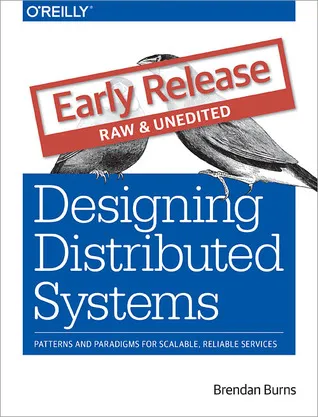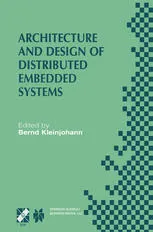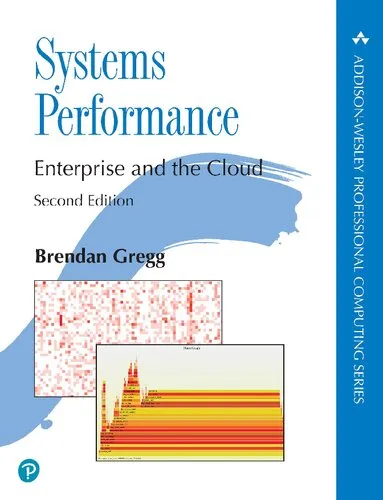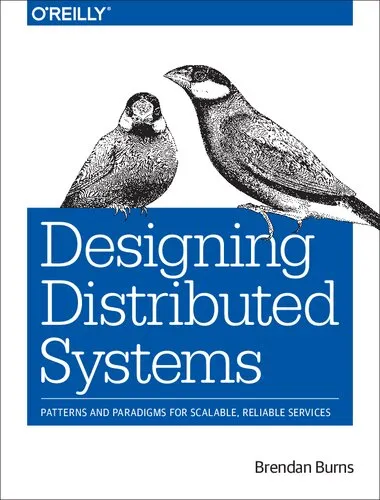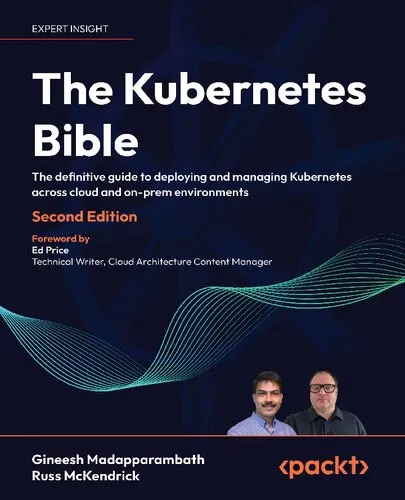Designing Distributed Systems: Patterns and Paradigms for Scalable, Reliable Services
4.3
Reviews from our users

You Can Ask your questions from this book's AI after Login
Each download or ask from book AI costs 2 points. To earn more free points, please visit the Points Guide Page and complete some valuable actions.Related Refrences:
Persian Summary
Introduction to 'Designing Distributed Systems: Patterns and Paradigms for Scalable, Reliable Services'
In the realm of software architecture, distributed systems have gained significant traction, particularly in building scalable and reliable digital services. 'Designing Distributed Systems: Patterns and Paradigms for Scalable, Reliable Services' is a vital resource for developers, engineers, and architects who endeavor to create robust distributed applications. Curated by Brendan Burns, a key figure in the field, this book guides its readers through the essential patterns and paradigms that form the backbone of distributed systems architecture.
Detailed Summary of the Book
The book delves deeply into the architectural patterns and paradigms that empower developers to harness the potential of distributed systems. Throughout its concise yet comprehensive chapters, the book tackles a variety of essential topics in distributed systems, ranging from foundational concepts to more complex architectures and patterns. It explores common challenges faced in distributed computing and how to overcome them using well-established practices. Readers can expect a thorough understanding of stateful services, data replication, and the importance of synchronization across distributed nodes.
Highly practical in nature, the book provides a series of patterns such as 'The Sidecar Pattern', 'The Ambassador Pattern', and 'The Adapter Pattern', each of which addresses a common problem in distributed systems. The author explains each pattern with clarity, supplemented by diagrams and real-world examples that encourage practical application. Whether the reader's focus is on microservices, service discovery, or scaling systems efficiently, the book offers valuable insights that are directly applicable to modern distributed applications.
Key Takeaways
The book emphasizes the importance of understanding and implementing design patterns specifically tailored for distributed systems. Key takeaways include:
- Scalability: Learn how to design systems that can scale horizontally, handling increased loads by adding more nodes rather than enhancing existing nodes.
- Reliability: Discover techniques for building systems that maintain operational performance despite failures.
- Consistency and Partition Tolerance: Understand the trade-offs of distributed databases and how to balance consistency, availability, and partition tolerance.
- Best Practices: Acquire insights into best practices for deploying, managing, and monitoring distributed systems effectively.
Famous Quotes from the Book
Throughout 'Designing Distributed Systems', Brendan Burns provides thought-provoking insights, encapsulated in memorable quotes, such as:
"Distributed systems are inherently complex, but their design can be simplified by lifting abstractions and common patterns."
"The future of software architecture lies in the efficient orchestration of fine-grained services that communicate across clouds and devices."
Why This Book Matters
The significance of 'Designing Distributed Systems' resonates in both academic and professional circles, particularly due to its ability to distill complex topics into accessible knowledge. For those who are new to the field, the book presents an invaluable introduction to the principles of distributed systems. For experienced practitioners, it serves as a reference guide that reinforces best practices and introduces advanced patterns for modern architectures.
In the evolving landscape of cloud computing and containerization, understanding distributed systems is imperative. This book bridges the gap between theory and practice, empowering technologists to design systems that meet the demands of today's dynamic environments. Its contribution to the literature on distributed systems is noteworthy because it not only fosters a foundational understanding but also instigates innovation and thoughtful design in professional practice.
Free Direct Download
You Can Download this book after Login
Accessing books through legal platforms and public libraries not only supports the rights of authors and publishers but also contributes to the sustainability of reading culture. Before downloading, please take a moment to consider these options.
Find this book on other platforms:
WorldCat helps you find books in libraries worldwide.
See ratings, reviews, and discussions on Goodreads.
Find and buy rare or used books on AbeBooks.
1961
بازدید4.3
امتیاز0
نظر98%
رضایتReviews:
4.3
Based on 0 users review
Questions & Answers
Ask questions about this book or help others by answering
No questions yet. Be the first to ask!
